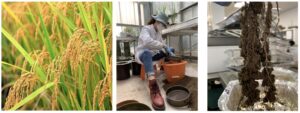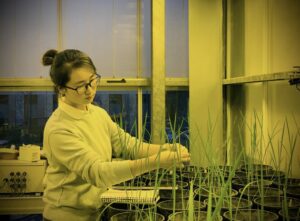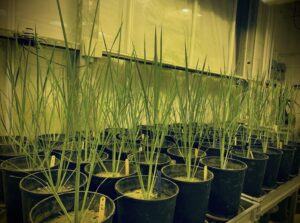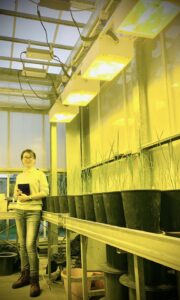Rice rhizosheath development – A Visitor’s perspective of research in Lancaster
I’m Jing Chen, a PhD student from Yangzhou University (laboratory of Prof Jianchang Yang from SHui’s Advisory Board), and I’ve been able to visit Lancaster thanks to scholarships of Jiangsu Provincial Government and Yangzhou University. I am continuing my study by investigating rhizosheath development of rice plants under different irrigation regimes, part-supported by the SHui Program, in Prof Ian Dodd’s laboratory at the Lancaster Environment Center (LEC).

Rice (Oryza sativa L) is one of the most important food crops in the world. However, increasing water scarcity in many rice cropping regions has stimulated many water-saving regimes in irrigated rice, such as the moderate soil drying irrigation to enhance water use efficiency. These irrigation techniques stimulate the rice roots to preferentially form rhizosheaths, comprising soil particles that adhere to the root system after it has been extracted from the soil.


After attending the Delta-T training workshop within the SHui Project, I’ve learned how to best use the porometer and various probes to measure stomatal conductance and soil moisture and other soil properties. Many of my co-workers have helped me to germinate better seedlings, operate the WinRHIZO software to measure root length, use thermocouple psychrometry to determine leaf water potential and image analysis software on the microscope to determine root hair length and root hair length density. I’ve enjoyed meeting new colleagues from different parts of the world, and enhanced my research ability thanks to Prof Ian Dodd’s patient and professional advice on experimental design and data analysis.


0 comments